Returns on Bondora were slightly lower compared to last month. Returns for 2019 still are well above their target, with 2018 rates also sitting solidly at higher levels than expected.
As always, performance charts by country are broken down by the number of loan issuances over the given period, with Orange representing <50 loans, Blue 51-200, and White >200.
Yearly Performance
The yearly return rate across Bondora for 2019 came in at 25.1%, with Finland holding the highest return rate of 29.3%. Compared to the previous month, the Spanish return rate fared the best, gaining 0.1% to 28.2%.
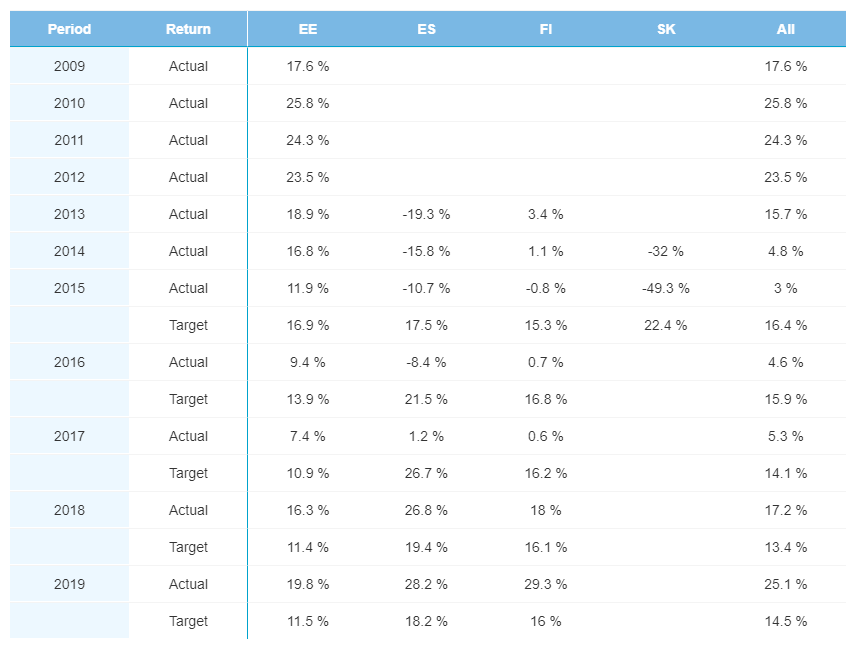
Quarterly Performance
This month we saw the first reported return rates for Q3 2019, which came in at 22.5% compared to a 14.0% target rate. Meanwhile, Q2 returns for the same year were lower by less than 2% to 28.0%.
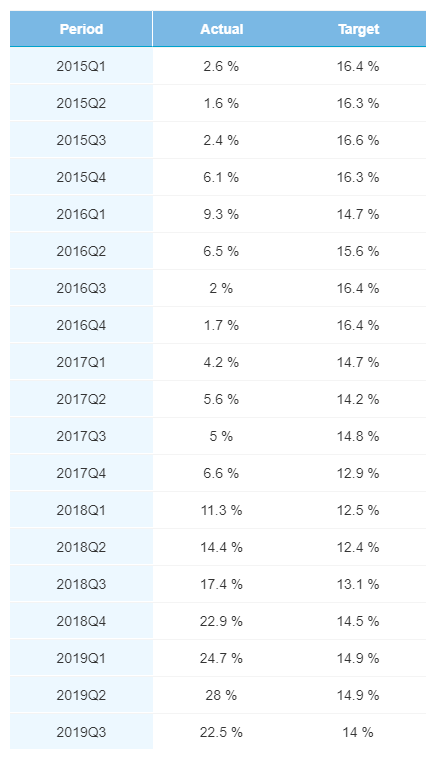
Finland
A, AA, and B rated Finnish loans were not issued in Q3 2019, a change from the past nine quarters. Instead, more C and D rated loans were issued over the quarter. All Q3 return rates were higher than their target rates, with F rated loans performing the best at a 26.6% return rate.
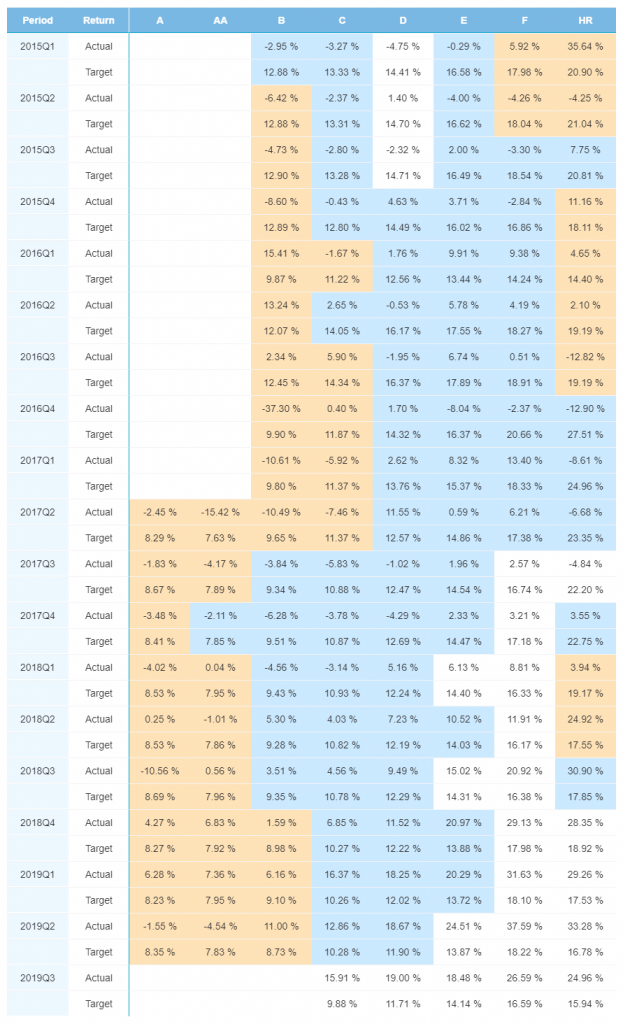
Estonia
The only change in Estonian loan issuances in January was less F rated loans issued in the country. All 2019 Q2 and Q1 return rates remain above their target rates. In Estonia D, E, and F rated loans are still performing better than other loan categories in the country.
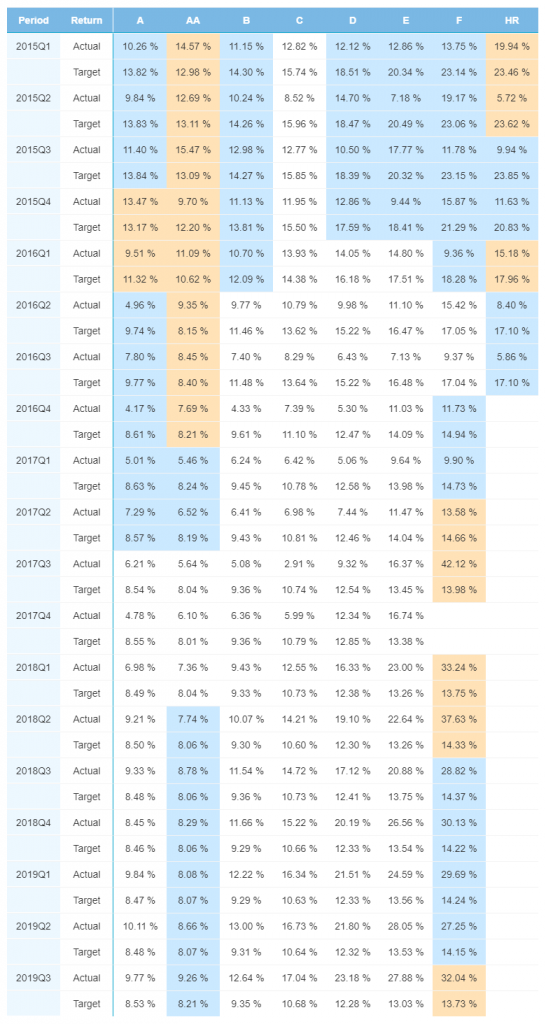
Spain
There was a skew toward higher rated loans in Spain. C rated loans in Spain were issued for the first time in six quarters, while more D and E rated loans were issued, with less HR rated loan issues in the country. Return rates for all but C rated loans were higher than their targets for Q3, leading the overall Spanish return rate higher to 28.2%.
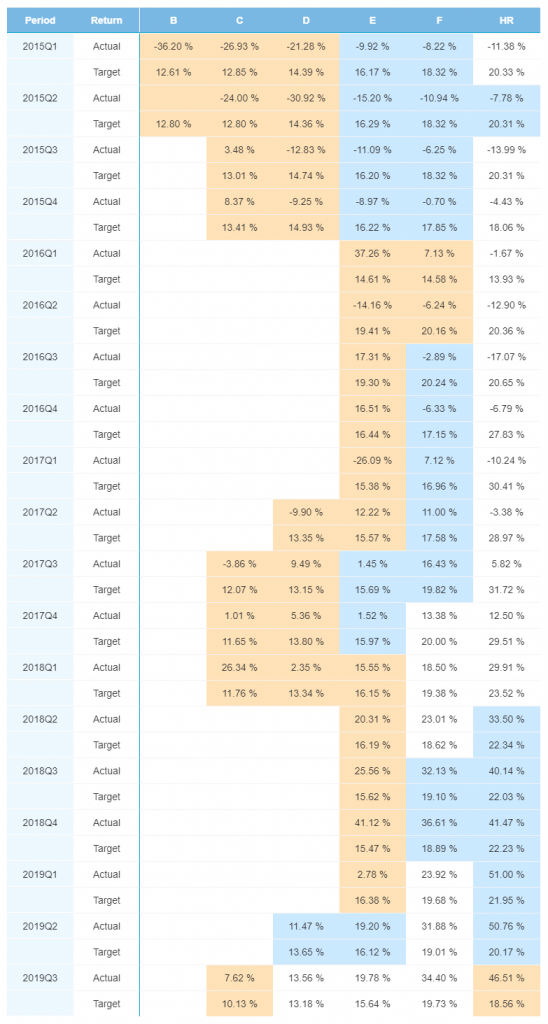
Economic News
Finland continues to push the envelope on social policies. The country’s government recently announced legislation that would give all parents, regardless of gender, the same amount of parental leave. This, says the government, will help promote gender equality in the country. The proposed changes would give each parent 6.6 months of leave, with pregnant women receiving an additional month.
Unfortunately for Estonians, their country’s minimum wage is some of the lowest in the EU. The country has the 8th lowest minimum wage in the EU at €584 per month, giving Estonian households less purchasing power than most of their EU counterparts. On a geopolitical note, Estonian intelligence has found that while the threat of a Russian attack on its own country remains low, Baltic countries may be under threat of Russian military action. This would bring Russia one step closer to Estonia, which still views the Russians as their biggest global security threat.
Spain hopes that as Britain leaves the EU, the status of Gibraltar is re-examined. Gibraltar has been a contentious point for the Spanish. In 2016 the UN released a report with its own views that the territory is non-self-governing administered by the UK. Spanish foreign minister Arancha González is now excited at the prospect of moving Gibraltar under Spain’s jurisdiction. “We have an incredible opportunity to fix a number of things that we have not been able to fix in the last 300 years,” she said. “At the end of the day whatever agreement we find will have to work for them and it will have to work for us. That’s the only red line in reality.” However, the British won’t give up the territory so easily. Some have even called Spain so “obsessed” with Gibraltar that it is forgetting its more pressing issues.
*As with any investment, your capital is at risk and the investments are not guaranteed. The yield is up to 6.75% p.a. Before deciding to invest, please review our risk statement or consult with a financial advisor if necessary.